Historically it was common for aristocratic families, the gentry and those families owning land, to want to control the descent of their property. This could be done by incorporating a trust within a purchase deed or in a Will.
However it was also common to do this by Marriage Settlements.
Arranged Marriages
For centuries, arranged marriages were usual between the wealthier or ‘landed’ families of society. Such a marriage could bring mutual prosperity, as well as ‘good’ connections.
An important part of the wedding arrangements was the drawing up of the Deed of Marriage Settlement. These detailed and complex deeds would recite all the property which would form the basis of a trust – usually benefiting the couple and their descendants.
The Marriage Settlement would also set out the terms and the beneficiaries as well as the trustees, who would be charged with administering the trust.
Here we look at the Marriage Settlement drawn up at the time of Harriet Barnard’s marriage to Richard Clarke as well as the property mentioned in the Deed.
Harriet Barnard & Richard Clarke
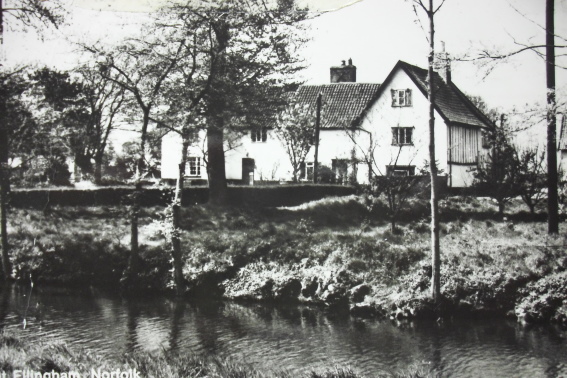
Great Ellingham Hall 1960s
Courtesy of Susan Fay
Harriet was the youngest daughter of Robert and Frances Barnard (née Catton) of Great Ellingham Hall. She was baptised in St James’s Church, Great Ellingham on the 9th June,1799.
On the 15th October, 1822, Harriet married Richard Clarke of Upton-upon-Severn, Worcestershire. Richard Clarke had (on at least a couple of occasions), been a visitor at Great Ellingham Hall. A record of one such visit exists by way of a letter from Richard to Harriet dated 12th July, 1819 – some three years before the couple married. However, I do not know whether their union was for love or an arranged marriage – or both!
In any event, the parties agreed and signed a Marriage Settlement Deed the day before the wedding.
The Content of the Settlement
From at least 1790, Harriet’s father, Robert Barnard, farmed at The Hall, Great Ellingham. He originally leased The Hall and the farm from the Reverend Francis Colman Negus, the Rector of Brome with Oakley in Suffolk. However after the death of the Revered Negus, the Barnard family may well have purchased The Hall and the farm.
Nonetheless, Robert Barnard owned certain other properties and land in the village in his own right. It is some of these properties which form part of the Marriage Settlement. These are set out in the Deed as follows:
Two Double Tenements or Dwellinghouses situate in Great Ellingham now in the respective occupations of Barnabas Long, Charles Clarke, William Pea and William Pea the younger
Tenements or Cottages situate in Great Ellingham now in the respective occupations of George Mitson the Younger, William Cocking and his undertenant
Double Tenement or Dwellinghouse situate in Great Ellingham now in the respective occupations of William Plumton and George Mitson
Arable land lying in Great Ellingham called “Yeomans” containing by estimation two acres more or less now in the occupation of the said John Barnard
Arable land lying in Great Ellingham called “The Upper Whale Belly” containing three acres and thirty two perches more or less now also in the occupation of the said John Barnard
Pasture ground lying in Great Ellingham called “The Whale Belly” containing one acre three roods and 12 perches more or less now also in the occupation of the said John Barnard
Pasture ground lying in Great Ellingham called “The Grass Pightle” containing three roods and thirty six perches more or less now also in the occupation of the said John Barnard
1802 Inclosure Map
The map prepared at the time of the Great Ellingham Inclosures c.1802 together with an associated Particulars & Valuation, help us to identify the position of Robert Barnard’s properties.
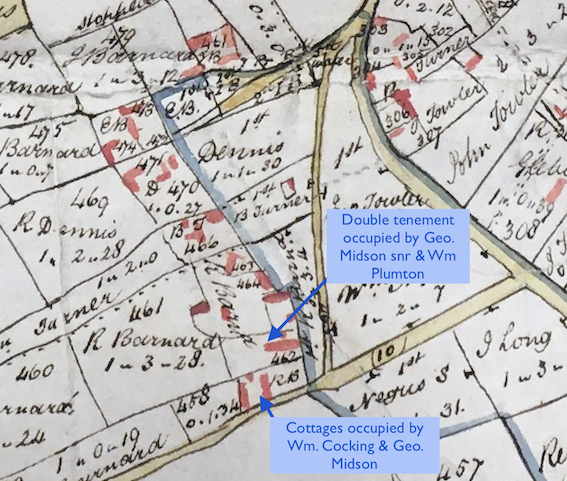
Extract from 1802 Map of Great Ellingham. Russell James Colman Plans. Norfolk Record Office Cat. Ref. C/Ca 1/84. All rights reserved Norfolk Record Office. With kind permission of NRO
The arrows on above extract from the 1802 map, shows what I believe to be the position of the dwellings occupied by George Midson senior and William Plumton (Plumpton). In addition, the cottages occupied by William Cocking and George Midson junior.
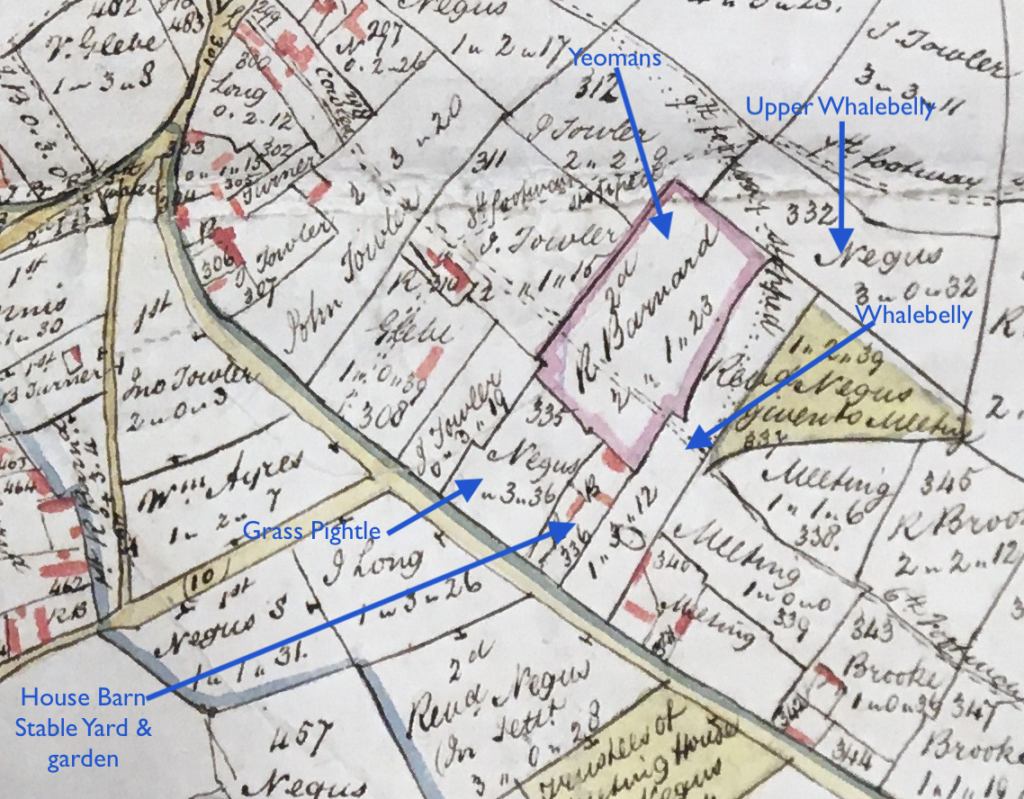
Extract from 1802 Map of Great Ellingham. Russell James Colman Plans. Norfolk Record Office Cat. Ref. C/Ca 1/84.
All rights reserved Norfolk Record Office. With kind permission of NRO
The above extract from the same map shows (at No.336), the position of the two double dwellinghouses occupied by Barnabas Long, Charles Clarke, William Pea and William Pea (the younger). The ‘House Barn Stable Yard’ later became known as Poplar Farm.
The map also shows the position of the various parcels of land.
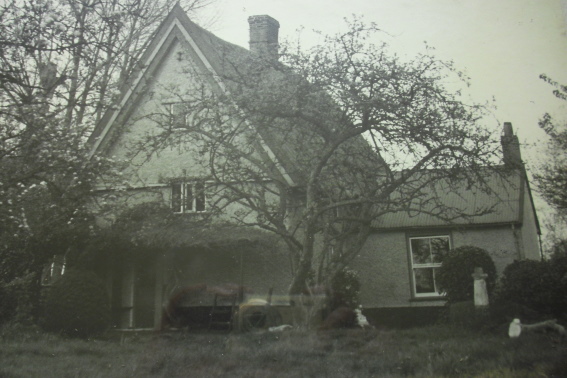
Poplar Farm, Long Street
Courtesy of Susan Fay
The Trust
The trustees appointed by Robert Barnard were James Mornemont of North Lopham and John Barnard of Great Ellingham. Both were farmers. I assume that ‘John Barnard’ is Robert’s son John.
The trust provides for Robert Barnard to receive all the rents and profits from the properties during his lifetime.
After Robert’s death, his widow Frances would take all the rents and profits. Again for her lifetime only.
On the death of the survivor of her parents, Harriet Clarke would then be entitled to all of the rents and profits. These properties as well as the rents and profits, would be outside the control of her husband Richard Clarke.
The trust also provides that should Richard Clarke survive Harriet, Richard would be entitled to the rents and profits. However, again, this was limited to his lifetime. In the event, Richard Clarke died many years before Harriet.
Ultimately, on the death of Harriet, the property and land would be disposed of in accordance with Harriet Clarke’s wishes set out in her will.
The Demise of the Beneficiaries of the Trust
Following the marriage, Richard and Harriet Clarke lived in Upton-upon-Severn.
Sadly for Harriet, her father Robert Barnard died in 1823, less than six months after her marriage.
Tragically, Harriet would encounter further distress. Her husband Richard Clarke died in August 1834. His death at 47, left Harriet a widow at 35 years of age, with three young children.
Her mother, Frances Barnard, died in Great Ellingham in 1842, having outlived her husband Robert by some 20 years.
At some point (and possibly after her husband’s death), Harriet Clarke moved from Upton-upon-Severn to Cheltenham.
Throughout this time, the dwellings and land in Great Ellingham continued to be subject to the trust and let to tenants. Harriet received all the income from the properties following the death of her mother in 1842.
Harriet died in Cheltenham in April 1863. In accordance with her late father’s wishes, the ownership of the Great Ellingham dwellings and land would pass in accordance with her last will and testament.
Harriet’s Daughters inherit the Great Ellingham Properties
Harriet left her estate (which included her Great Ellingham properties), equally between her two surviving daughters, Selina Barnard Goodman Clarke and Harriet Maria Clarke.
The sisters (who never married) retained the ownership of the properties and land, but (as far as I am aware), they never lived in any of the properties.
Death of the Clarke Sisters
Harriet Maria Clarke died on the 5th January 1900. She left all her estate (including her share in the Great Ellingham properties), to her sister, Selina.
Selina Clarke died on the 6th October, 1907. However, Selina’s will ensured that the Great Ellingham properties (as well as the pieces of land), remained in the ownership of the Barnard family.
New Owner Sarah Rebekah Tyrrell
Selina bequeathed all her ‘freehold cottages and land’ to Sarah Rebekah Tyrrell, the widow of her cousin, George Tyrrell Tyrrell (formerly George Tyrrell Barnard). You can read more about Sarah Tyrrell’s inheritance here.
1907 Conveyance
On the 30th December, 1907, the late Selina Clarke’s executrix conveyed to Sarah Rebekah Tyrrell:
Four messages tenements or cottages with the gardens and appurtenances thereto belonging situate at Great Ellingham aforesaid and now in the occupations of Henry Cobon, James Fox and _______ Spencer and Robert Barnard Lebbell
These four cottages included the property which became known as Poplar Farm.
A piece of garden ground near or adjoining the said cottages
and upon which four other cottages recently pulled down formerly stood
Arable and pasture land situate in Great Ellingham aforesaid containing by estimation eight acres little more or less which piece of land is now and has been for some years in the occupation of the said Robert Barnard Lebbell
This land included the pieces of land called ‘Whalebelly’, ‘Upper Whalebelly’, ‘Yeomans’ and ‘Grass Pightle’.
The 1907 Conveyance Deed confirmed that the premises (as described above) were indeed the exact same premises and land set out (although with a different description), in the 1822 Marriage Settlement Deed.
Accordingly, we can be sure that the land with the remaining cottages, conveyed to Sarah Tyrrell in 1907, were the very same premises as recited in the 1822 Marriage Settlement.
Site of the Four Recently Demolished Cottages
However there is an anomaly in the 1907 Conveyance Deed with regard to the site of the four cottages which had ‘recently’ been demolished.
The description suggests that the land was near or adjoining the other cottages. However, we know that these cottages were near to the property which later became known as Chestnut Grove Farm at Town Green.
I believe that the Conveyance Deed was drawn up by solicitors in Thetford. They likely had little (or no) knowledge of the properties. Sarah Tyrrell too may have limited knowledge.
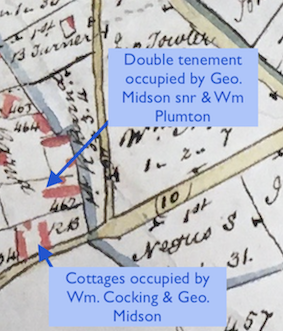
Extract from 1802 Map of Great Ellingham. Russell James Colman Plans. Norfolk Record Office Cat. Ref. C/Ca 1/84.
All rights reserved Norfolk Record Office. With kind permission of NRO
However, given that the Conveyance Deed confirms that the property and land conveyed to Sarah Tyrrell is exactly the same as the property and land described in the 1822 Marriage Settlement, we can be confident that the four cottages described as ‘recently pulled down’ were indeed the cottages which were once occupied by George Mitson (the younger) and William Cocking, and William Plumton and George Mitson in Town Green.
Sarah Tyrrell sells a Dwellinghouse & Land
In 1920, Sarah Tyrrell sold part of the property and land she had inherited from Selina Clarke. She sold 8 acres of land together with the dwellinghouse (described as being formerly two tenements), with other buildings to William R Lebbell. This property is Poplar Farm.
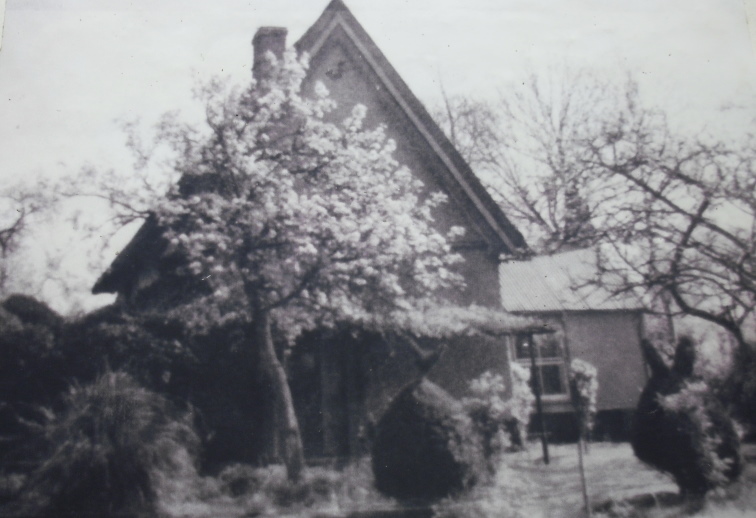
Poplar Farm, Long Street. Photograph taken at Springtime. Courtesy of Susan Fay
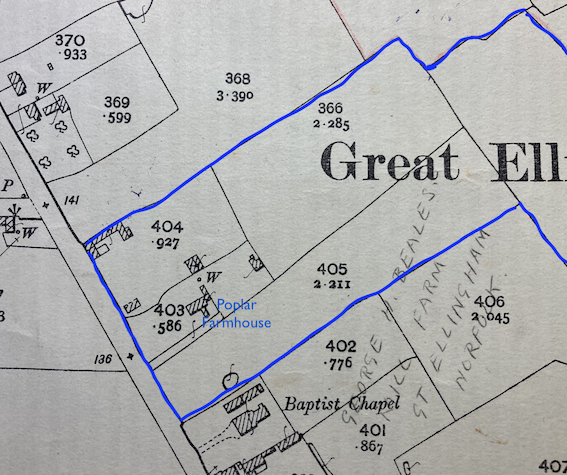
Extract from 1906 Ordnance Survey Map. Second Edition. Surveyed in 1881. Revised 1904
The above extract from the 1906 Ordnance Survey Map shows (most) of the land and premises which Sarah Tyrrell sold to William R Lebbell in 1920. As well as the cottage later known as Poplar Farmhouse, the land included ‘Grass Pightle’, ‘Yeomans’, ‘Upper Whalebelly’ and ‘Whalebelly’.
The Reverend Green’s Inheritance
Following her death in 1929, the remainder of the land and property in Great Ellingham (which once formed part of Harriet Clarke’s marriage settlement in 1822), was conveyed to Sarah’s kin, the Reverend Henry Tyrrell Green of Santon Downham.
The Assent conveying the property to the Reverend Green describes the property as:
‘Three freehold cottages with the outbuildings and garden ground thereto belonging situate at the parish of Great Ellingham in the said County of Norfolk as the same are now in the respective occupations of T F Palmer & A Rooker and bounded on the North and West by property belonging to G Goddard and on the South and East by the public road leading from Rockland to Attleborough’
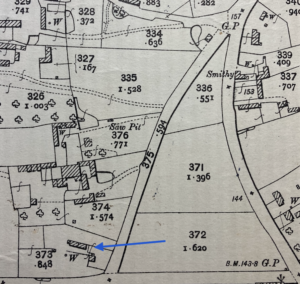
Extract from 1906 Ordnance Survey Map. Second Edition. Surveyed in 1881. Revised 1904
The arrow on the above extract from a 1906 Ordnance Survey map shows the position of the three freehold cottages.
A 1929 Inland Revenue Succession Duty Form associated with the Reverend Green’s inheritance of the three cottages in Great Ellingham, shows that the properties were occupied by ‘Stevens, Rosier & Palmer’.
I believe reference to ‘Rosier‘ and ‘A Rooker‘ to be erroneous for A Rosher. The 1911 census captures Alfred Rosher and his wife living at the property on the corner of Town Green and Penhill Road. This property later became known as ‘Sunnymeade’.
The 1929 Poll Register finds Thomas Frederick Palmer at the nearby Old Hall Farm. Accordingly, I believe Thomas Palmer sub-let one (or two) of the cottages.
What became of the Cottages?
It seems that only one of the three cottages remain today. The cottage (now known as ‘Sunnymeade’), is likely to have been much altered over the decades.
The Reverend Henry Tyrrell Green of Grove House, Grove Lane, Thetford died on the 20th December, 1966. Although in his will he left substantial legacies (including several monetary gifts to various churches), there is no mention of a specific property or properties which the Reverend Green may have owned at the time of this death.
Accordingly, I do not know whether Henry Green disposed of his Great Ellingham property before he died or it was later sold by his executors.
Sources:
Great Ellingham Parish Registers. Norfolk Record Office. PD 609. Also available via https://www.familysearch.org
Upton-upon-Severn Parish Registers.
“England Births and Christenings, 1538-1975”, database, FamilySearch (https://familysearch.org/ark:/61903/1:1:J9MT-R7D : 19 September 2020), Richard Flowerdew Clarke, 1826
“England Births and Christenings, 1538-1975”, database, FamilySearch (https://familysearch.org/ark:/61903/1:1:N55F-221 : 19 September 2020), Selina Barnard Goodman Clarke, 1832.
“England Births and Christenings, 1538-1975”, database, FamilySearch (https://familysearch.org/ark:/61903/1:1:N55F-JZ4 : 19 September 2020), Robert Barnard Clarke, 1828.
“England Births and Christenings, 1538-1975”, database, FamilySearch (https://familysearch.org/ark:/61903/1:1:J7RB-DX7 : 19 September 2020), Harriett Clarke, 1824.
Upton upon Severn: St Peter & St Paul: Extract of a Register. Burials. Viewed via FreeReg website.
Barnard, Colin. 2009. ‘She loves me not?’ Pg. 92-93. Stamp Magazine. March 2009.
1800 Inclosure Commissioner’s Particulars and Valuation. Great Ellingham. Norfolk Record Office MC2213/119
F.W. Horner, Records of the Surveyors to Commissioners for Inclosure in Parishes in Norfolk & Suffolk. 1799-1842. Great Ellingham (Act 1799). Norfolk Record Office. Catalogue Ref BR 90/2
1802 Map of Great Ellingham. Russell James Colman Plans. Norfolk Record Office. Catalogue Ref. C/Ca 1/84
Great Ellingham Hall farm estate formerly of the Barnard family Norfolk Record Office reference numbers MC 114/1/36 583/2 and 583/3
Tyrrell, Sarah Rebekah of Thetford. Will dated 17 February, 1927. Probate dated 23 April, 1929.
Tyrrell, George Tyrrell of Thetford. Will dated 15th February, 1890. Probate dated 28th October, 1899.
Clarke, Harriet Maria of Ipswich. Will dated 29 December, 1899. Probate dated 3 April, 1900.
Clarke, Selina Barnard Goodman of Ipswich. Will dated 6 November, 1900. Probate dated 28 October, 1907.
Green, Henry Tyrrell of Thetford. Will dated 5 March 1964. Probate dated 16 March, 1967.
Copies of the Wills & Probate and reference to 1863 Letters of Administration for Harriet Clarke obtained via https://probatesearch.service.gov.uk/#wills
1929 Register of Electors. Southern Parliamentary Division, Norfolk. Parish of Ellingham, Great. accessed via www.findmypast.co.uk